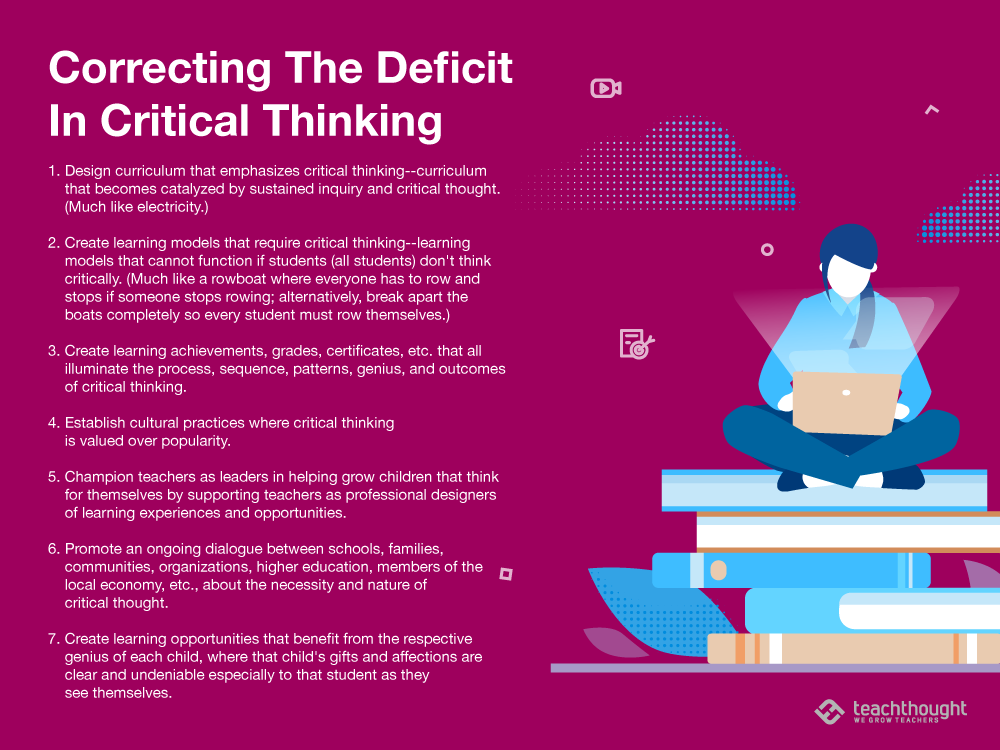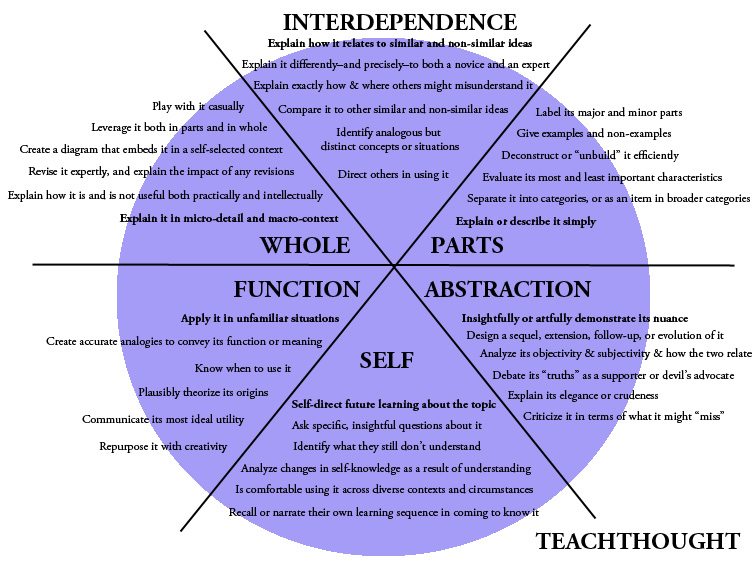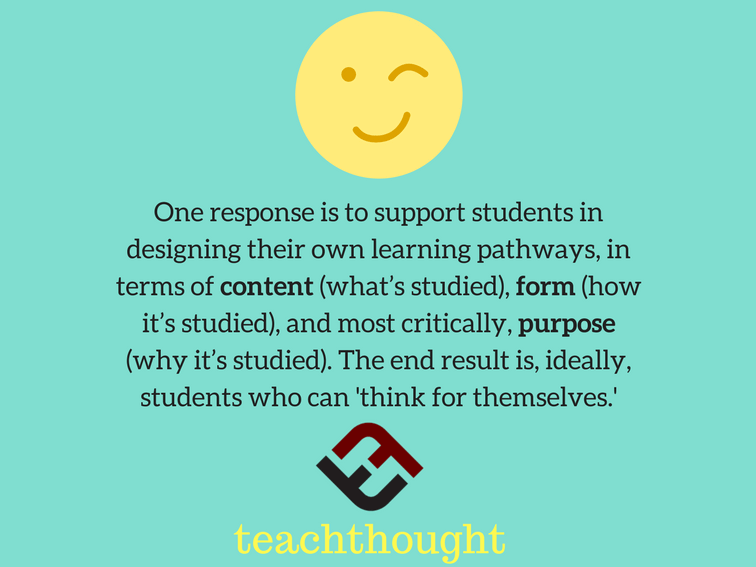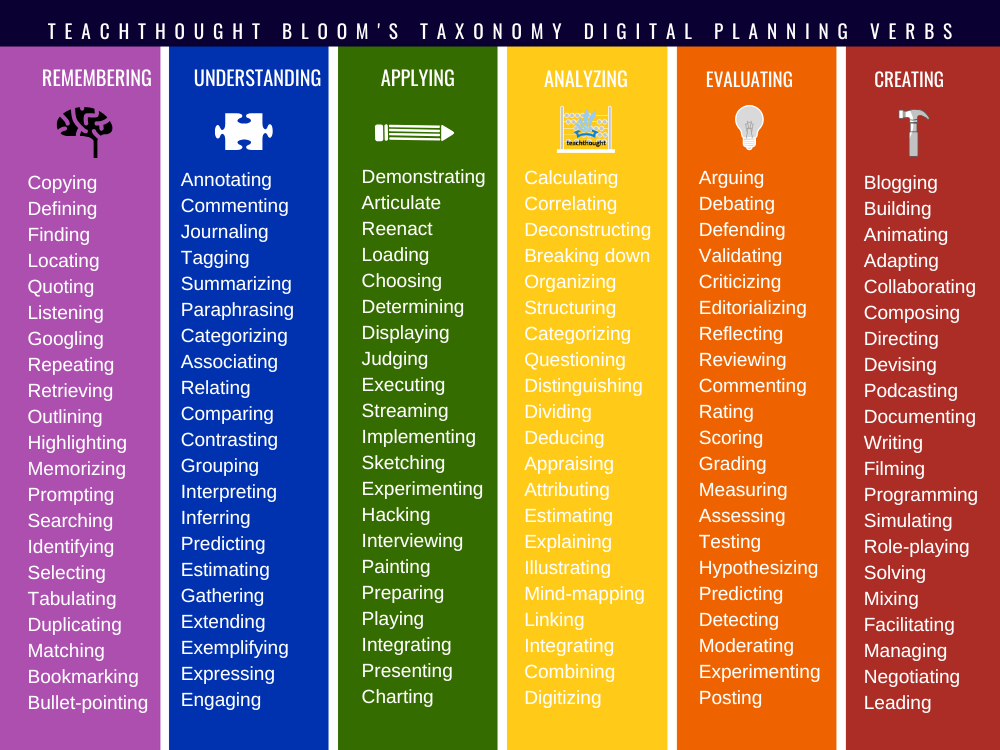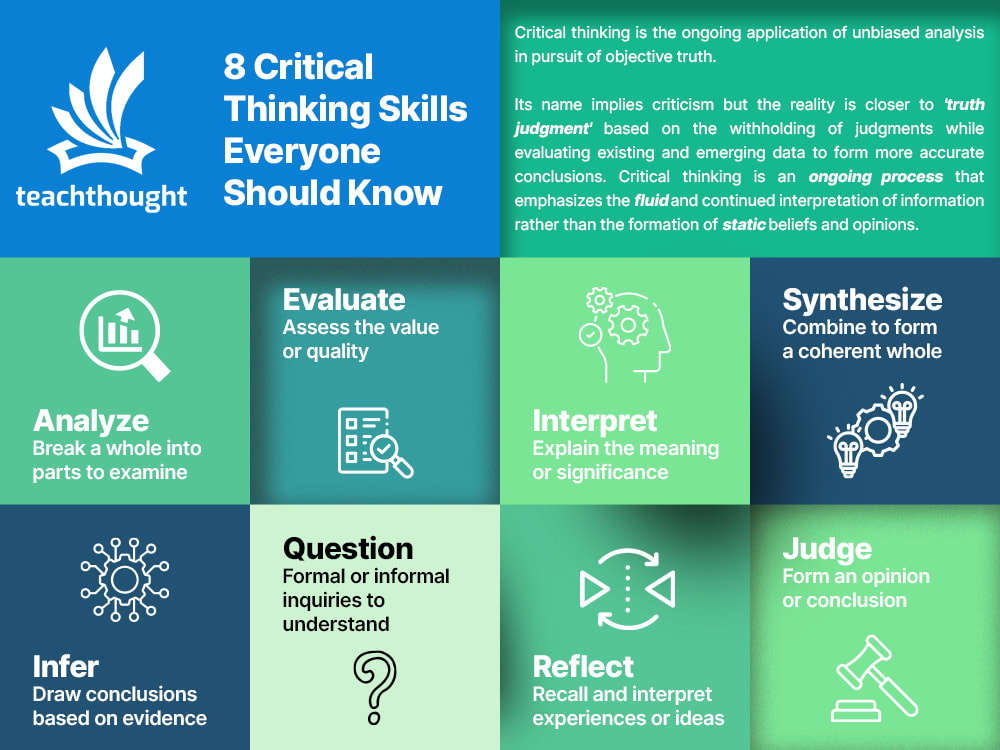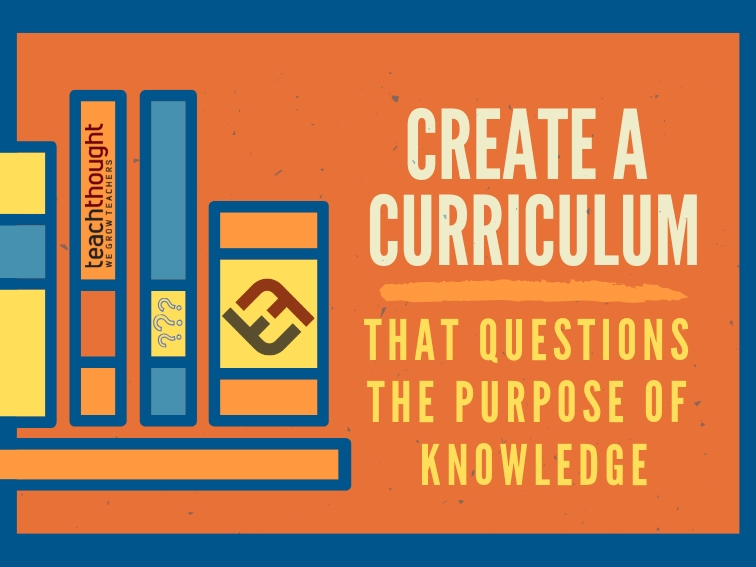Critical Thinking Posts
Correcting The Deficit In Critical Thinking
We can address a deficit of critical thinking by embedding into the architecture of education. This can be accomplished in any number of ways.
6 Domains Of Cognition: The Heick Learning Taxonomy
The Heick Learning Taxonomy can be used to guide planning, assessment, curriculum design, and self-directed learning.
Teaching Critical Thinking Starts With The Student
Out of all of the ideas and circumstances and knowledge and information that you encounter on a daily basis, what’s worth…
Bloom’s Digital Taxonomy Verbs For Technology Integration And Lesson…
Learn how Bloom’s Digital Taxonomy helps evaluate digital tasks and AI tools like ChatGPT. Align tech use with higher-order thinking for…
8 Of The Most Important Critical Thinking Skills
The most important critical thinking skills include analysis, synthesis, interpretation, inferencing, and judgement.
Bloom’s Taxonomy Verbs List: 100+ Power Verbs for Teachers
Discover 100+ Bloom’s Taxonomy verbs, organized by cognitive level, to write objectives, design assessments, and strengthen critical thinking in any subject.
Create A Curriculum That Questions The Purpose Of Knowledge
The purpose of curriculum is to provide a mutual language to organize and communicate knowledge–and students inherit its implications.
Critical Thinking Is A Mindset
Critical thinking is certainly a ‘skill’ but when possessed as a mindset–a playful and humble willingness–it shifts from a labor to…
